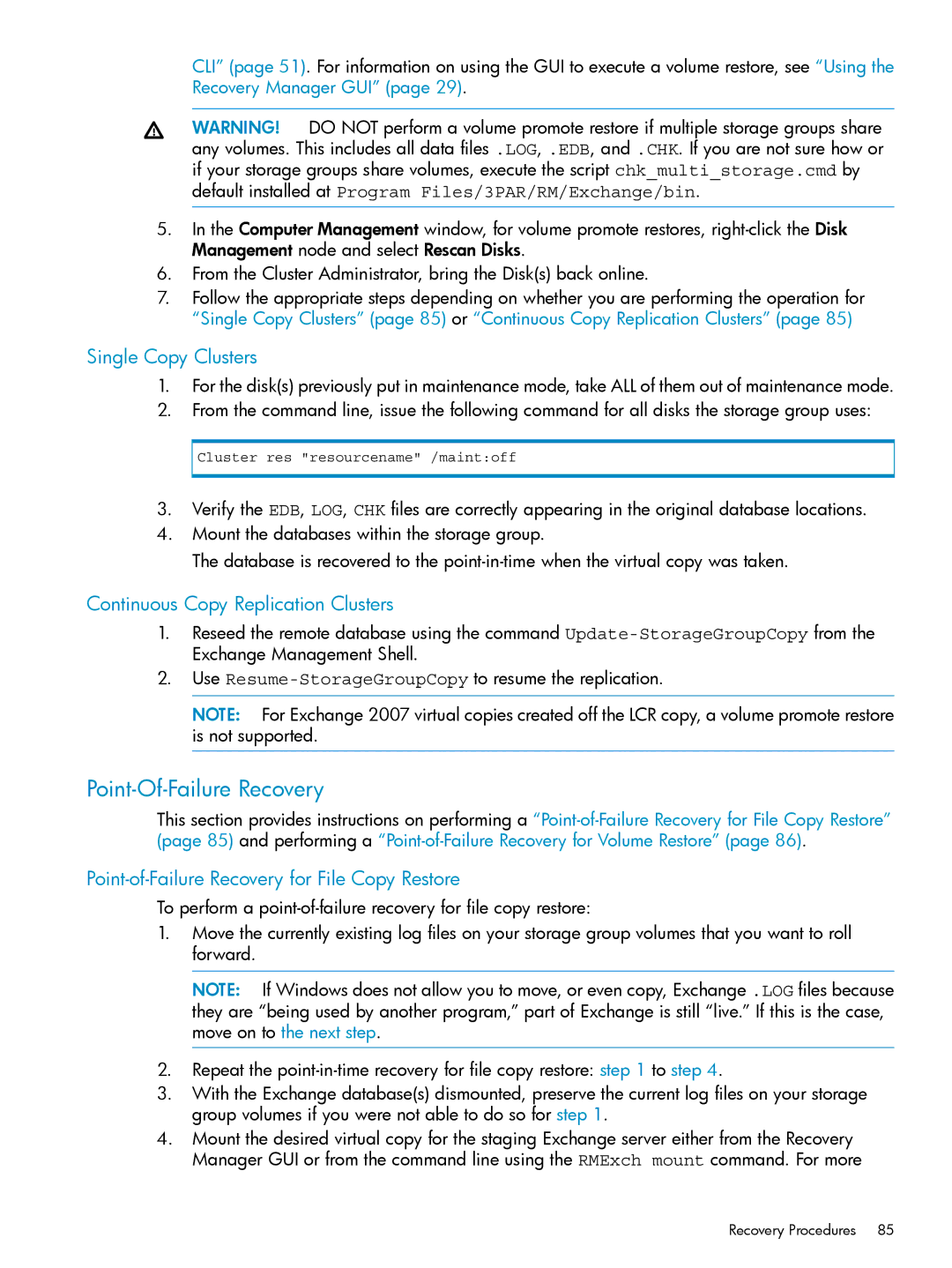
CLI” (page 51). For information on using the GUI to execute a volume restore, see “Using the Recovery Manager GUI” (page 29).
WARNING! DO NOT perform a volume promote restore if multiple storage groups share any volumes. This includes all data files .LOG, .EDB, and .CHK. If you are not sure how or if your storage groups share volumes, execute the script chk_multi_storage.cmd by default installed at Program Files/3PAR/RM/Exchange/bin.
5.In the Computer Management window, for volume promote restores,
6.From the Cluster Administrator, bring the Disk(s) back online.
7.Follow the appropriate steps depending on whether you are performing the operation for “Single Copy Clusters” (page 85) or “Continuous Copy Replication Clusters” (page 85)
Single Copy Clusters
1.For the disk(s) previously put in maintenance mode, take ALL of them out of maintenance mode.
2.From the command line, issue the following command for all disks the storage group uses:
Cluster res "resourcename" /maint:off
3.Verify the EDB, LOG, CHK files are correctly appearing in the original database locations.
4.Mount the databases within the storage group.
The database is recovered to the
Continuous Copy Replication Clusters
1.Reseed the remote database using the command
2.Use
NOTE: For Exchange 2007 virtual copies created off the LCR copy, a volume promote restore is not supported.
Point-Of-Failure Recovery
This section provides instructions on performing a
Point-of-Failure Recovery for File Copy Restore
To perform a
1.Move the currently existing log files on your storage group volumes that you want to roll forward.
NOTE: If Windows does not allow you to move, or even copy, Exchange .LOG files because they are “being used by another program,” part of Exchange is still “live.” If this is the case, move on to the next step.
2.Repeat the
3.With the Exchange database(s) dismounted, preserve the current log files on your storage group volumes if you were not able to do so for step 1.
4.Mount the desired virtual copy for the staging Exchange server either from the Recovery Manager GUI or from the command line using the RMExch mount command. For more
